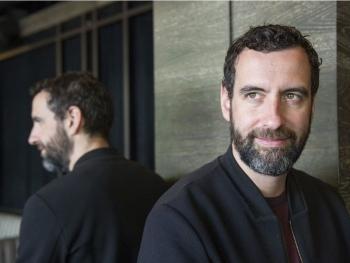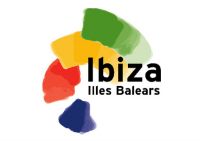Amsterdam's 'night mayor' aims to improve Vancouver nightlife
A former nightclub promoter in Amsterdam is part of a worldwide movement to bring nightlife in from the dark.
Mirik Milan is what the Dutch call the nachtburgemeester — the night mayor — of Amsterdam. He’s in Vancouver this week to talk to politicians, planners and business owners about the importance of nightlife to the city’s economy and what can be done to improve the Granville Entertainment District (GED).
Milan describes what he does as “city planning at night” that involves building a coalition that includes civic officials, police, the nightlife industry and residents. The nighttime economy has its own needs and requirements and isn’t just an afterthought to what goes on during the day, he said.
A successful night mayor, Milan said, needs a nightlife scene that speaks with one voice. On the other side, he said it needs politicians, planners and other daytime people who are willing to listen to “our ideas.”
“We always say that you need top-down and bottom-up structures in place,” Milan said.
The Hospitality Vancouver Association (HVA) has brought Milan to the city for three days. The association advocates for clubs, pubs and other businesses along Granville Street and the Davie Village. He’s speaking to Vancouver city council May 2.
According to the HVA, the 14 liquor-primary businesses in the GED are responsible for more than 900 jobs and $43.5 million in annual revenue.
Milan became the world’s first night mayor in 2014 in an election where the voters included people at festivals, club and bar owners, and the online public. He’s in a unique position as the head of what The Guardian called a “small but influential non-profit” group funded by business and the City of Amsterdam.
Milan has worked for VICE, the Stedelijk Museum Amsterdam and DIESEL. He was a co-host of a EDM club night called RAUW.
Seven or eight years ago Amsterdam and its nightlife were at a crossroads, Milan said.
“People were saying, ‘We’re losing the young, creative (people), they’re moving to Berlin where there are no closing hours,’ ” he said.
One of the ways Amsterdam responded was by creating 24-hour venues. They’re located outside of the city centre at sites able to accommodate them. What’s radical is that operators can decide their own opening and closing hours.
Granting a licence to a 24-hour centre is contingent on the application’s creative content, which brings together music, art and culture. One successful centre is called De School, which has a daytime café, a higher-end restaurant, art gallery and gym. The nightclub is in the basement.
“We wanted to spread out tourists over the city and make the city attractive for a young, creative workforce and reduce brain drain to other cities because they weren’t finding what they needed,” he said.
In Amsterdam, the 24-hour venues are about 20 minutes — about six kilometres — by bicycle. That was once considered way to far to bike to a club. Now people are regularly cycling 20 to 25 minutes at night to get to the venues, Milan said.
What the 24-hour centres do is give people a destination outside the city centre. They also help address the problem of having thousands of people on the street when all the bars and nightclubs close at the same time as they do on Granville.
“You can extend your night a couple of hours if it is a good night, close early if it isn’t,” Milan said about the 24-hour centres. “It gives entrepreneurs more room to try things out.”
The new venues are having a big impact in and outside of Amsterdam.
“Now people are saying that Amsterdam is one of the club capitals of the world,” he said.
While Milan is focused on nightlife entertainment, he sees himself as an advocate for anyone working at night outside of non-traditional nine-to-five hours. He said it’s part of having a 24-hour vision of the city.
“Let us prepare for the future,” he said. “How do we make sure that late-night workers have the same rights as during the day?”
The idea of a night mayor is one that has quickly spread throughout the world. Night mayors, or their equivalents, are now in cities that include New York, London and Paris.
One of Milan’s successes in Amsterdam is the transformation in Rembrandtplein, a 17th-century square in the city centre. The city’s daytime mayor said something had to be done about the 250 incidents a year related to alcohol and violence. The three-year plan that was developed included:
• Removing obstacles in public spaces. One of the most difficult initiatives was convincing Amsterdam residents they could neither park their bikes nor ride them in the plaza and surrounding narrow streets.
• Creating Rembrandtplein Hosts who are on the streets Friday and Saturday nights. They’re social workers with medical training who are skilled at de-escalating situations.
• Creating a mobile website to handle complaints. If there’s an incident, it can be dealt with right away — rather than having an official respond hours or days later when the problem has disappeared.
After two years there has been a 30-per-cent decrease in nuisances, which include littering and shouting, and a 25-per cent drop in alcohol-related incidents from 250 to under 200.
“People in a city really have to work together and find their own strategy,” he said.
Source: http://vancouversun.com








